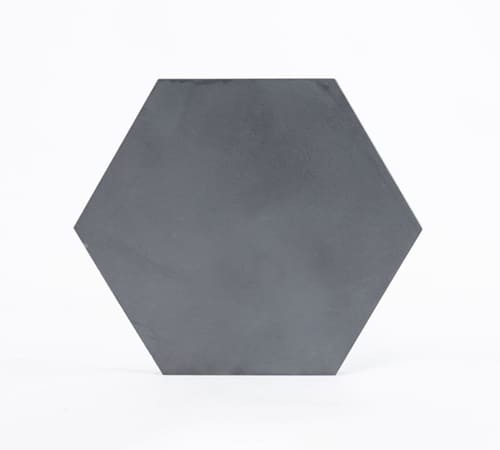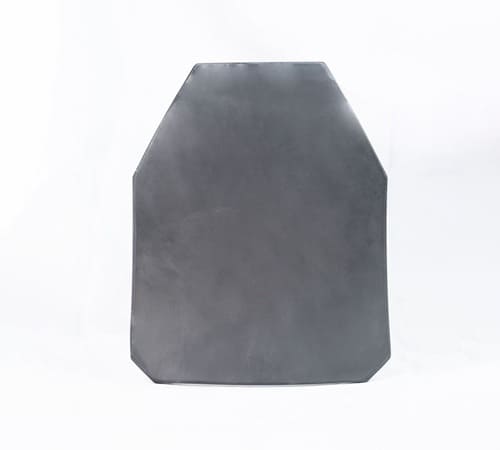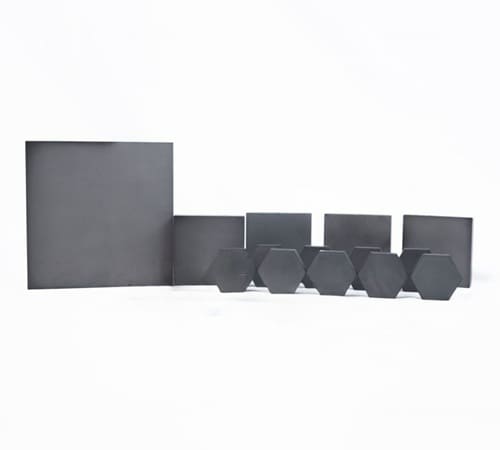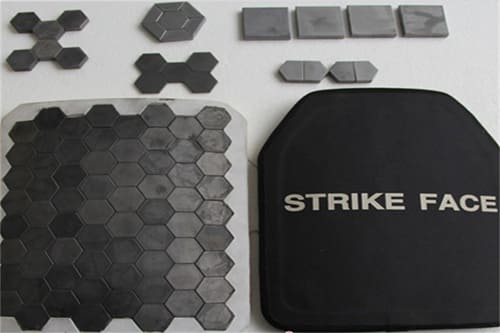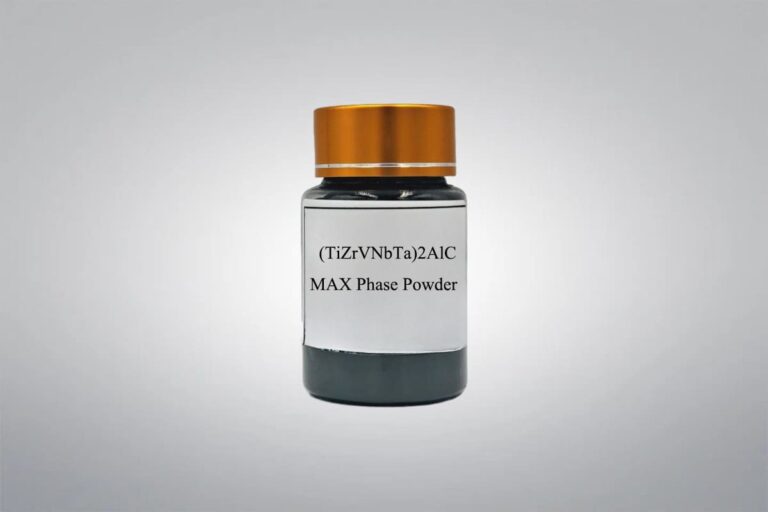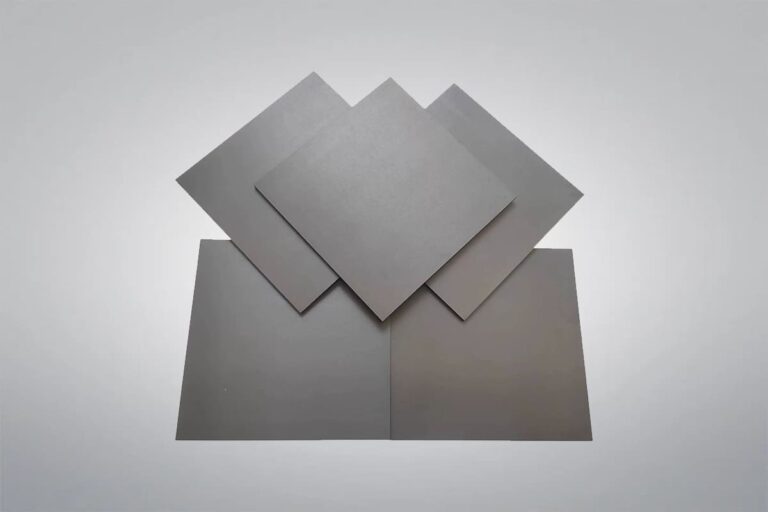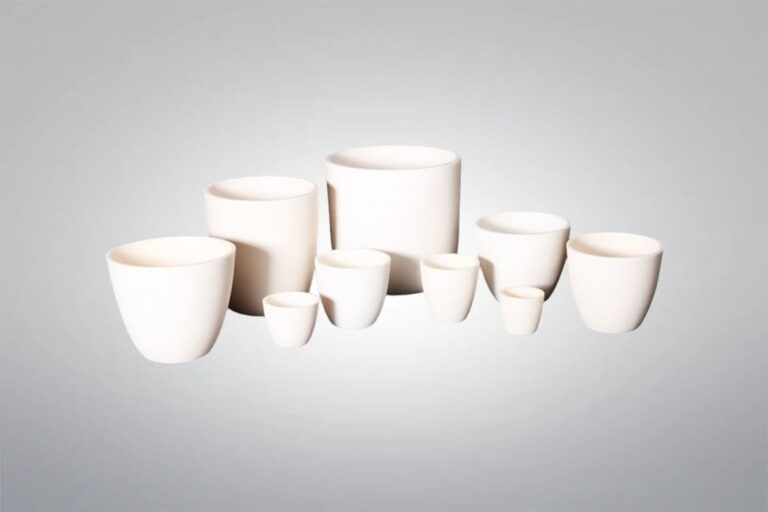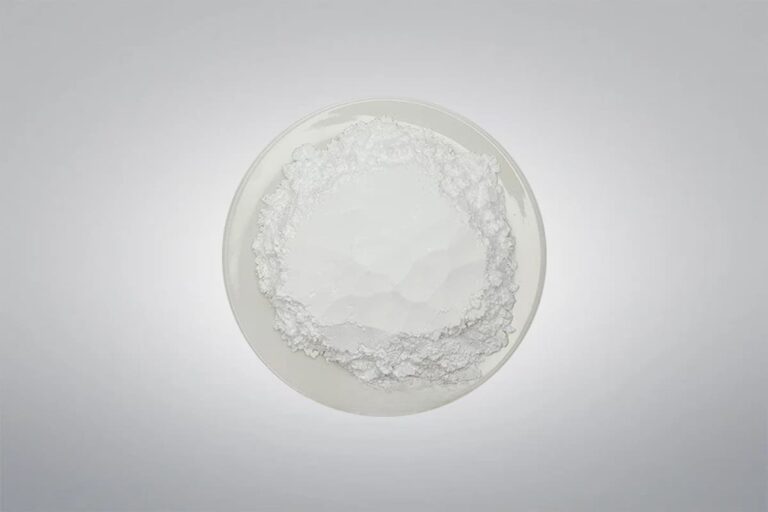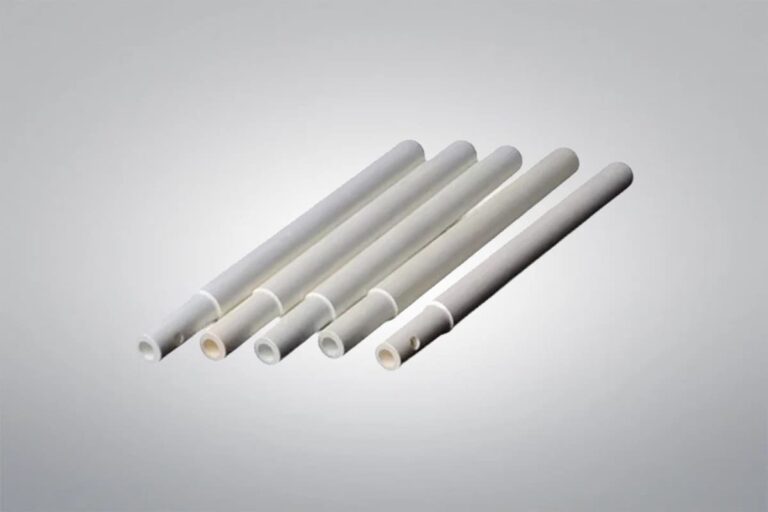Silicon Carbide Bulletproof Plate
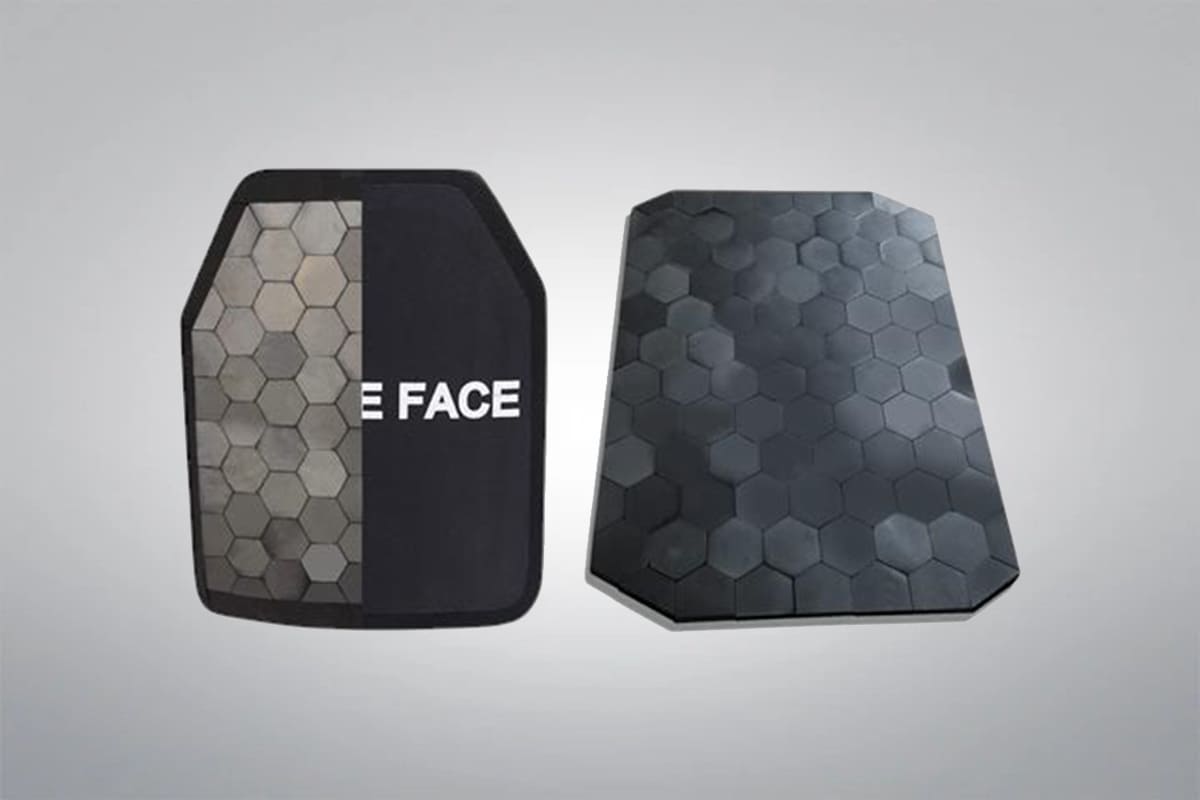
Silicon Carbide Bulletproof Plate
Purity: 97% – 99%
Shape: Square, Disc, Hexagonal, Triangular, or other customized shape.
Silicon Carbide Bulletproof Plate is the most competitive material for ballistic ceramic, offering low cost, light weight, high hardness, and impact resistance. As a leading supplier and manufacturer of premium silicon carbide products, we can supply high-quality silicon carbide bulletproof plates with various specifications and competitive prices, offering customized solutions to meet specific requirements.
Or email us at sales@heegermaterials.com.Silicon Carbide Bulletproof Plate Data Sheet
| Purity: | 97% – 99% |
| Color: | Black or Dark grey |
| Chemical Formula: | SiC |
| Material Grades: | Reaction Bonded SiC, Pressureless Sintered SiC, Hot-pressed SiC, etc. |
| Density: | >3.2 g/cm³ |
| Maximum Operating Temperature: | 1500°C |
| Thermal Conductivity: | 120 W/m·K |
| Size: | 10-500 mm, or customized |
| Thickness: | 0.5-50 mm, or customized |
| Curve Type: | Flat or Curved |
Silicon Carbide Bulletproof Plate Description
Silicon Carbide (SiC) primarily exists in two crystal structures: the cubic β-SiC and the hexagonal α-SiC. Compared to other ceramics such as alumina (Al2O3) and boron carbide (B4C), SiC exhibits superior mechanical properties, better oxidation resistance, higher wear resistance, and lower friction coefficient. Additionally, it has excellent thermal stability, high strength at high temperatures, low thermal expansion, high thermal conductivity, and outstanding resistance to thermal shock and chemical corrosion. Silicon Carbide Bulletproof Plate is the most competitive ballistic ceramic material with a low cost. Advanced Ceramics Hub can supply high-precision silicon carbide bulletproof plates with customized solutions for specific applications.
Silicon Carbide VS. Alumina VS. Boron Carbide
Silicon Carbide (SiC), Alumina (Al2O3), and Boron Carbide (B4C) are the three commonly used materials in ballistic ceramics. Among them, alumina bulletproof plates (commonly called white plates) have the lowest hardness (HRA 90) and high density. Boron Carbide bulletproof plates have the highest hardness and low density, offering the best performance, but the cost is much higher than the other two materials. Compared to alumina bulletproof plates, silicon carbide bulletproof plates (commonly called black plates) have a hardness of HRA 92, with only 82% of the density. Here is the comparison table:
| Material | Hardness (HRA) | Density | Performance | Cost | Common Name |
|---|---|---|---|---|---|
| Aluminum Oxide | 90 | 3.85~3.98 g/cm3 | Lowest hardness, high density | Low | White Plates |
| Boron Carbide | 94~95 | 2.50~2.52 g/cm3 | Best performance, high hardness | Very High | – |
| Silicon Carbide | 92 | 3.10~3.20 g/cm3 | Good performance, lower density | Affordable | Black Plates |
Silicon Carbide Bulletproof Plate Features
- High temperature resistance
- High hardness
- High strength
- Good corrosion resistance
- Low thermal expansion
- Lightweight
Silicon Carbide Bulletproof Plate Manufacturing Process
- Raw Material Preparation: Blend high-purity SiC powder with additives (e.g., carbon, boron).
- Forming: Shape into the desired shapes via dry pressing, slip casting, or isostatic pressing.
- Green Machining (Optional): Machine the green body for near-final shape.
- Sintering: Heat at 1,800–2,200°C using pressureless sintering, hot pressing, or reaction bonding
- .Post-Sintering Machining: Grind/polish with diamond tools for precise dimensions.
- Surface Treatment (Optional): Polish or apply coatings for specific applications.
- Quality Control: Inspect dimensions, hardness, density, and defects.
Silicon Carbide Bulletproof Plate Applications
- Military Protection: Used in bulletproof vests, armored vehicles, and tanks to defend against high-velocity bullets and shrapnel.
- Law Enforcement Gear: Employed by police and special forces in body armor or shields for lightweight, high-strength protection.
- Aerospace: Integrated into spacecraft or military aircraft components to protect against high-speed impacts or explosive fragments.
- Civilian Security: Utilized in high-end security gear, such as bulletproof vehicles or safe rooms, for VIP protection.
- Industrial Applications: Applied in high-risk industrial settings to shield equipment or personnel from explosions or high-speed debris.
Silicon Carbide Material Properties
Silicon Carbide Material Grades
Reaction bonded silicon carbide (RBSiC) is made by mixing SiC, carbon, and binder, then infiltrating with silicon at high temperature. The vapor-phase method reduces free silicon to under 10%, improving performance. The result is a silicon-silicon carbide composite (SiSiC), not pure SiC.
SiC powder + C powder + binder mixed → forming → drying → protective atmosphere for degassing → high-temperature silicon infiltration → post-processing.
Reaction Bonded SiC Advantages:
- Low sintering temperature
- Low production cost
- High material densification
- Carbon and silicon carbide framework can be pre-machined into any shape
- Shrinkage during sintering is within 3%, aiding dimension control
- Significant reduction in the need for finishing, ideal for large, complex components
Reaction Bonded SiC Disadvantages:
- Residual free silicon in the sintered body after processing
- Reduced strength compared to products from other processes
- Decreased wear resistance
- Free silicon is not resistant to corrosion from alkaline substances and strong acids (e.g., hydrofluoric acid)
- Limited usage due to corrosion susceptibility
- High-temperature strength is impacted by free silicon
- Typical usage temperature is limited to below 1350-1400°C
Pressureless sintered silicon carbide refers to the densification sintering of samples with varying shapes and sizes at 2000–2150°C without applying external pressure and using an inert gas atmosphere, by incorporating suitable sintering additives. The sintering process can be categorized into solid-phase sintering (SSiC) and liquid-phase sintering (LSiC).
Solid-Phase Sintering SiC (SSiC) Properties:
- High Sintering Temperature: Requires a high sintering temperature (>2000°C).
- High Purity Requirement: The raw materials must be of high purity.
- Low Fracture Toughness: The sintered body has lower fracture toughness and tends to undergo transgranular fracture.
- Clean Grain Boundaries: There is essentially no liquid phase, and the grain boundaries are relatively “clean.”
- Stable High-Temperature Strength: High-temperature strength remains stable up to 1600°C without significant changes.
- Grain Growth: At high temperatures, grain growth is easy, leading to poor grain uniformity.
- High Crack Sensitivity: The material is highly sensitive to crack strength.
Liquid-Phase Sintering SiC (LSiC) Properties:
- Lower Sintering Temperature: Compared to solid-state sintering, the sintering temperature is lower.
- Smaller Grain Size: The grain size is smaller, with better uniformity of grains.
- Improved Fracture Toughness: Due to the introduction of a liquid phase at the grain boundaries, the fracture mode shifts to intergranular fracture, significantly improving fracture toughness.
- Additive Influence: Uses multi-component eutectic oxides (e.g., Y2O3-Al2O3) as sintering additives, promoting densification.
- Reduced Crack Sensitivity: Liquid-phase sintering reduces the material’s sensitivity to crack strength.
- Weakened Interface Bonding: The introduction of the liquid phase weakens the bonding strength at the grain boundaries.
Pressureless sintered boron carbide combines high purity and the excellent mechanical properties of boron carbide for use in both ballistic armor and semiconductor manufacturing.
Hot-Pressed SiC Advantages:
- Enables sintering at lower temperatures and shorter times, resulting in fine grains, high relative density, and good mechanical properties.
- The simultaneous heating and pressing facilitate particle contact diffusion and mass transfer.
- Suitable for producing silicon carbide ceramics with good mechanical performance.
Hot-Pressed SiC Disadvantages:
- The equipment and process are complex.
- High demands on mold material.
- Limited to producing simple-shaped parts.
- Low production efficiency.
- High production costs.
Recrystallized Silicon Carbide (RSiC) is a pure silicon carbide ceramic made via high-temperature evaporation-condensation, with a porous, high-strength structure, offering excellent heat, corrosion, and thermal shock resistance, used in kiln furniture, nozzles, and chemical components.
Recrystallized SiC Properties & Applications:
- The sintering process, based on evaporation-condensation, doesn’t cause shrinkage, preventing deformation or cracking.
- RSiC can be shaped through methods like casting, extrusion, and pressing, and its shrinkage-free firing allows for precise dimensions.
- After firing, recrystallized RSiC contains 10%-20% residual porosity, primarily influenced by the green body’s porosity, providing a foundation for porosity control.
- The sintering mechanism creates interconnected pores, making RSiC suitable for applications in exhaust and air filtration.
- RSiC has clean grain boundaries, free from glass and metal impurities, ensuring high purity and retaining SiC’s superior properties for demanding high-performance applications.
Hot Isostatic Pressed Silicon Carbide (HIPSiC) is a high-performance ceramic produced via hot isostatic pressing. Under high temperature (around 2000 ℃) and uniform high-pressure gas (typically argon), silicon carbide powder is densified into a nearly pore-free structure.
Hot Isostatic Pressed SiC Advantages:
- Uniform mictrostructure and fine grain size
- Low sintering temperature and time
- High density
- High purity and component control
Hot Isostatic Pressed SiC Disadvantages:
- Difficult packaging technology
- High initial investment and operational costs
- Limited for large or complex shapes
Spark Plasma Sintering Silicon Carbide is a high-performance ceramic produced using spark plasma sintering technology. This process employs pulsed current and pressure to rapidly density silicon carbide powder at relatively low temperatures (around 1800-2000 ℃) in a short time.
Spark Plasma Sintering SiC Properties:
- Faster heating rate
- Lower sintering temperature
- Shorter sintering time
- Fine and uniform grains
- High density
- Appliable for small and precision parts
Silicon Carbide Ceramic Machining

Silicon Carbide (SiC) is a highly durable ceramic material with extreme hardness (9.5 Mohs), thermal stability (up to 1650 ℃), and resistance to wear, corrosion, and high temperatures. However, machining silicon carbide presents challenges due to its extreme hardness and brittleness. Specialized techniques and tools are required to achieve precise cuts and shapes. The common machining methods include:
- Diamond Grinding: Diamond tools are used to achieve smooth surfaces and precise shapes.
- Laser Cutting: Suitable for cutting thin SiC materials. Laser cutting offers high precision and minimal material waste.
- Ultrasonic Machining: This method uses high-frequency vibrations to cut and shape brittle materials like SiC without causing cracks.
- Electrical Discharge Machining (EDM): A non-traditional method that uses electrical sparks to remove material, effective for hard ceramics like SiC.
- Grinding With CBN Tools: Cubic boron nitride (CBN) tools can be used for grinding SiC, providing an alternative to diamond grinding for certain applications.
- Water Jet Cutting: Using a high-pressure jet of water, sometimes with abrasive particles, to cut through SiC. This method is useful for cutting complex shapes.
Silicon Carbide Ceramic Packaging
Silicon Carbide ceramic products are typically packaged in vacuum-sealed bags to prevent moisture or contamination and wrapped with foam to cushion vibrations and impacts during transport, ensuring the quality of products in their original condition.
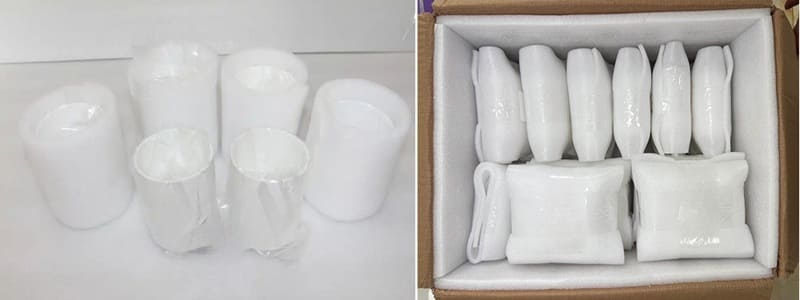
Download
Get A Quote
We will check and get back to you in 24 hours.

